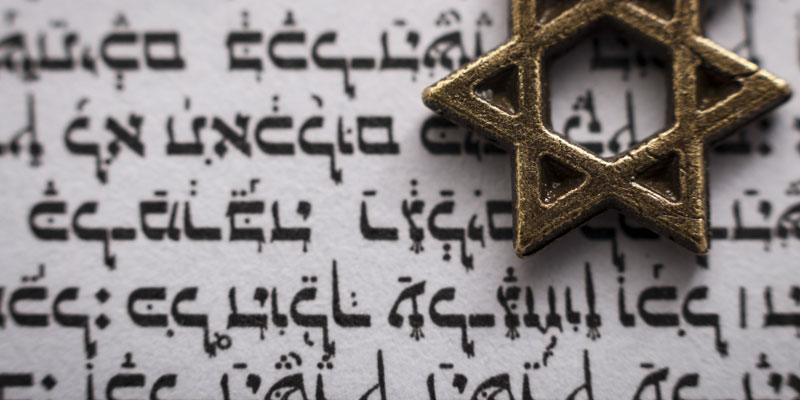Through years, the Rabbi has been crucial for Jews, due to its knowledge and wisdom. Its figure is a very important one for those Jews who want to know and understand in a better way the Torah’s commandments. Besides its experience about Judaism and what the Torah says, Rabbis are an excellent support for the guidance for those who want to live under the Torah’s teachings and directives.
Throughout the history of Judaism, there have been a lot of remarkable and significant Rabbis. Maimonides, a medieval Rabbi with medical and philosophical skills, who was considered the most important and influential Rabbi in the middle ages. He created works like the Mishneh Torah, Guide for the Perplexed, and the Sefer Hamitzvot, which include multiple reasoning about the Judaism philosophy. Or Abraham Isaac Kook, who was an expert in the Talmud and considered the creator of the Yeshiva Merkaz Harav. Besides them, there have been hundreds of influential Rabbis through years.
In this article, we will talk about some of the most important Rabbis in the recent history, that is to say, for the 20th century.
Jacob Neusner
He was born in 1932 in Hartford, Connecticut and died in 2016, in New York City. Rabbi Neusner was a prominent figure in the Talmud and Mishna commandments, dedicating many years of his life to the study and teach about these important texts.
Rabbi Neusner studied history and theology multiple universities, like Harvard, Oxford, and Columbia. Besides, his studies, Neusner was a teacher in those universities and also at the universities of South Florida, Brandeis, Brown and Dartmouth College.
Currently, he is considered one of the most important Jewish authors in history, writing and editing more than 900 texts. Some of his most important writings are From History to Religion, the Four Stages of Rabbinic Judaism, The Theological Foundations of Rabbinic Midrash, Jerusalem, and Athens Exegesis: The Congruity of Talmudic and Classical Philosophy, Confronting Creation: How Judaism Reads Genesis, among other works.
Besides his Jewish work, Rabbi Neusner studied other religions and their relationship to Judaism. In other words, he took some of the most important principles of religions like Christianity, Islam, and other faiths, exploring their philosophy and relationship with Judaism. Because of this, Neusner developed important works, like the Bible and Us: A Priest and A Rabbi Read Scripture Together, World Religions in America: An Introduction and A Rabbi Talks with Jesus.
Michael Lerner
Among his work as Rabbi, Lerner is also a political activist and writer. He was born in 1943 in Newark, New Jersey. He is currently the editor of Tikkun, a multiple faiths magazine and the Rabbi of the Beyt Tikkun Synagogue in California. Lerner studied at Columbia University and years later, he earned a Ph.D. at the University of California. He has been also a teacher at Trinity College, the University of California and at Sonoma State University.
After his experience as a teacher, Lerner founded a religious, intellectual and political magazine, called Tikkun: A Bimonthly Jewish Critique of Politics, Culture and Society. Through this magazine, Lerner has been able to show and express some of his thoughts about the relationship between Judaism, politics, and other life aspects.
In 1996, Rabbi Lerner founded the Beyt Tikkun Synagogue, which is a very special one as it has no building. This Synagogue is related to the Tikkun magazine and formed by the community of this publication.
Besides his work at Tikkun and the Synagogue, Lerner has been honored as the president of the college organization of the United Synagogue of America. He also earned the Gandhi, King, Ikeda Community Builders Prize. In addition, Lerner has participated in different TV shows like Larry King Live, Meet the Press with Tim Russert, and the Bill Moyers PBS show.
Menachem Mendel Schneerson
Also known as the Rebbe, Schneerson was born in 1902 in Mykolaiv, Ukraine and died in 1951 in New York. He is considered one of the most significant figures of Judaism after the Holocaust, due to his efforts in the awakening of the Jewish sentiment around the world after the World War II.
The Rebbe worked in multiple Jewish causes around Europe, where he could understand and know about the Jewish life in countries like Russia, Germany, Portugal, and France. In 1941, he escaped to the United States, where he was part of multiple Jewish movements, contributing to multiple social initiatives and services, and spreading the Torah directives and teachings in the American Jewish society. In 1950, he became in one of the most important leaders of Judaism in the United States, leading multiple movements to raise awareness about what happened in the Holocaust, increasing the Jewish sentiment around the world.
Some of his most influential works are the six volumes of the Chassidic discourses, the 32 volumes of the Schneerson’s Hebrew and Yiddish letters or the two volumes of the talks on the Mishneh Torah.

